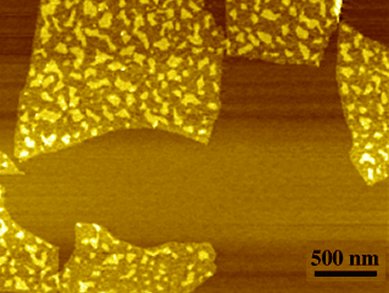Pristine graphene agglomerates in water, complicating biologically relevant applications. Erkang Wang and co-workers, Changchun Institute of Applied Chemistry, Chinese Academy of Sciences, have overcome this barrier by functionalizing graphene with a phospholipid monolayer. The composite forms well-dispersed aqueous colloids and can be used as a matrix to immobilize enzymes.
To make the composite, the researchers reduced graphene oxide with L-ascorbic acid in the presence of the phospholipid, which adheres to the hydrophobic graphene through van der Waals interactions with its fatty hydrophobic chains.
When the redox-active enzyme microperoxidase-11 is immobilized on this matrix, it retains its native structure and activity. On a glassy carbon electrode, it acts as an electrocatalytic sensor for H2O2 down to a concentration of 7.2 x 10–7 M and retains its activity for several weeks when stored at 4 °C.
The researchers expect potential applications for the composites in biomimetics and drug-delivery systems.
- Enzyme Immobilization and Direct Electrochemistry Based on a New Matrix of Phospholipid-Monolayer-Functionalized Graphene,
Jiyang Liu, Lei Han, Tianshu Wang, Wei Hong, Yaqing Liu, Erkang Wang,
Chem. Asian J. 2012.
DOI: 10.1002/asia.201200629



